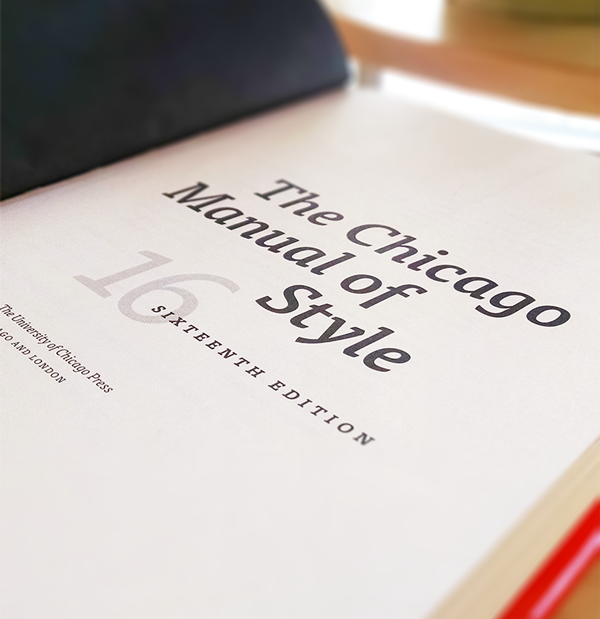May 06, 2015
Introducing the Chicago (Bibliography) Style Template

Welcome, Chicago (Bibliography)!
While Edifix has long supported the Chicago Author-Date system of reference citations—listed as "Chicago (Author-Date)" on the Editorial Style menu—the Edifix Team is happy to announce that we now support Chicago's Notes and Bibliography style, listed as “Chicago (Bibliography).”
Please note that the Edifix style template for Chicago (Bibliography) is specific to bibliographic entries in this style—not the note.
What is the Chicago Notes and Bibliography style?
The Chicago Manual of Style describes two distinct citation systems:
- Notes and Bibliography
- Author-Date References
While the Author-Date style uses a fairly traditional “Harvard-style” citation system (parenthetical author-date citations and corresponding reference list), the Notes and Bibliography system uses a combination of notes, either footnotes or endnotes, and usually a corresponding alphabetical bibliography. Authors may use the notes to document unusual types of sources as well as to add commentary. Because of this flexibility, the Notes and Bibliography system is preferred by fields in the humanities.
A typical set of notes and corresponding entry in the bibliography for a journal article may look like this:
*Citation in a note: **
- Kenneth M. Price, “Digital Scholarship, Economics, and the American Literary Canon,” Literature Compass 6, no. 2 (March 2009): 274, doi:10.1111/j.1741-4113.2009.00622.x.
* Note: The Manual recommends, “if the bibliography includes all works cited in the notes, the notes need not duplicate the source information in full” (The Chicago Manual of Style. 16th ed. Compiled by the University of Chicago Press. Chicago, IL: University of Chicago Press, 2010.).
Shortened citation in a note:
- Price, “Digital Scholarship, Economics, and the American Literary Canon,” 274.
Bibliography entry (Edifix’s speciality):
Price, Kenneth M. “Digital Scholarship, Economics, and the American Literary Canon.” Literature Compass 6, no. 2 (March 2009): 274–90. doi:10.1111/j.1741-4113.2009.00622.x.
What happened to the Notes?
Because a note in the Chicago Notes and Bibliography style has a very flexible format and can contain a variety of information—the full citation, a shortened citation, annotations, etc.—the Edifix Team has focused on the Bibliography portion of this system, which has a more rigid format.
Want a new style template? See an error in a template?
We are always looking to expand and fine-tune our ever-growing collection of editorial style templates. If you want to see a particular editorial style added to our list of templates, or you find an error in a template that already exists, feel free to contact us!
Link: https://edifix.com/blog/introducing-the-chicago-bibliography-style-template